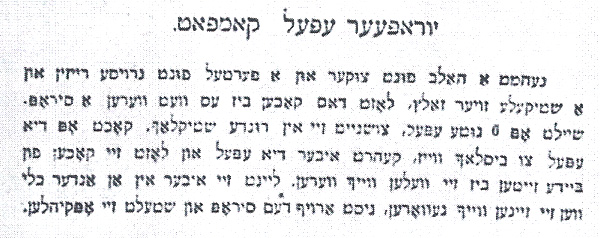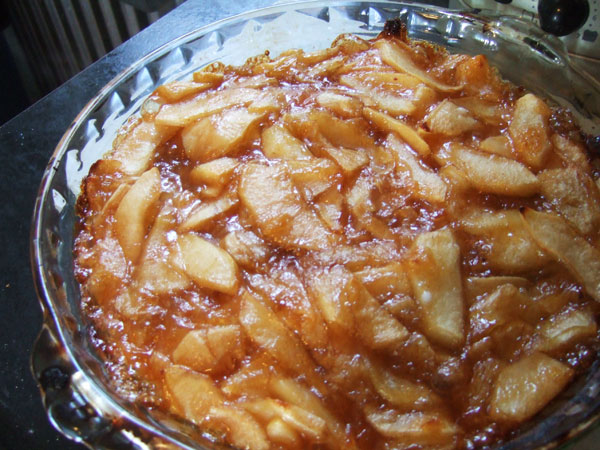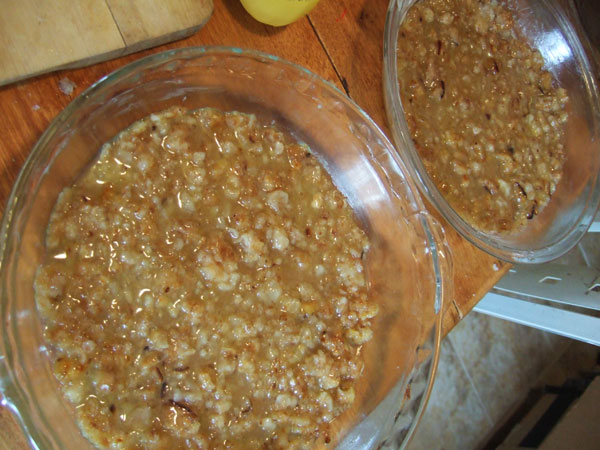 Dishes from the Forme of Cury, the oldest English cookbook. Photo by Will Heath.
Dishes from the Forme of Cury, the oldest English cookbook. Photo by Will Heath.
“Furmente wyth Porpays,” is a wheat and milk gruel/drink mixed with slivers of porpoise. Why would you want to eat Furmente wyth Porpays? Well, you’re rich, and its a fast day, and it happens to be 14th century England.
This recipe comes from the oldest cookbook written in English, The Forme of Cury–“cury” being a Middle English word for cooking. The document is believed to be compiled in 1390 by the master cooks of King Richard the II; one of the oldest and best copies of this extraordinarily rare manuscript is on display RIGHT NOW at the Morgan Library & Museum. I stopped by the Morgan because I was determined to revive 14th century recipes that could be served, and enjoyed, at a 21st century dinner party.
The History
Curator of Medieval and Renaissance Manuscripts, Roger Wieck, took me into the library where the manuscript is on display. He casually pointed out  the document was on display across from “…One of our Gutenberg bibles.” The collection has several. The Gutenberg was printed about the same time the Morgan’s copy of the Forme of Cury was written; one book to feed to the spirit, the other to feed the body.
the document was on display across from “…One of our Gutenberg bibles.” The collection has several. The Gutenberg was printed about the same time the Morgan’s copy of the Forme of Cury was written; one book to feed to the spirit, the other to feed the body.
The cooking manuscript is written in navy blue ink on animal-skin vellum, which looks soft and semi-translucent. It’s rolled in a way that reminds me of a Torah, the top and bottom having to be coiled and adjusted to reach each recipe. Wieck choose to display a recipe for coneys–or rabbits, the origin of the name of Coney Island–and another for Blanc Mange, a tribute to his love of Monty Python.
Middle English, on first glance, looks closer to Klingon than English. Luckily, the University of Manchester Library, has not only digitized their version, but offers a transcription of each page, which I referenced to plan my 14th Century Dinner Party.
Prepping for a Medieval Dinner
The manuscript contains about 200 recipes, many of them fascinating in more subtle ways than sea mammal stew. One dessert is delicately flavored with hawthorn flowers, a blossom I wasn’t aware was edible–I’ll have to give it a try in the spring. Another is made with cherries, and uses ground cherry pits for flavor, a technique that would have delivered a gentle almond flavor, as well as a gentle dose of arsenic.
I emailed a few friends, inviting them to a “14th Century Dinner Party,” and set about selecting a few recipes that were within my abilities to prepare. I skipped the arsenic and the dolphins and decided to start with Appulmoy, an applesauce-based pudding. Pared and cored cooking apples went into a pot with a bit of water and were cooked until soft. The original recipe says to push them through a strainer, but I took a 2013 shortcut and used an immersion blender. To the hot apple mush, I added one cup each rice flour, honey, and almond milk as well as 1 tsp salt and 2 tsp “powder fort,” or strong spice.
Strong Spice is a medieval spice blend that may have been sold pre-mixed; there are very few recipes on how to make it. A 14th century Italian cooking manuscript, Libro di cucina, recommends a blend of black pepper (I used half “smoked black peppercorns” to try to emulate some of the flavor of cooking fires), long pepper (and Indian spice that fell out of favor in Europe after the American chili pepper was introduced), cloves and nutmeg. I put the first three ingredients in my pepper grinder and cracked them into the Applemoy, and then grated half a nutmeg into the dish.
One of the most significant aspects of this cooking manuscript is the lack of herbs and the prominence of spices. Spices screamed wealth, as they were extremely expensive to import, and the rich covered everything with copious amounts of spice. One of my guests would comment on the strength of the flavors in the food, when one would might expect bland cooking from the medieval era.
I slowly simmered the thickening Applemoys. Dense and gluey, it popped and bubbled like a witch’s cauldron, and tasted only of the heat of black pepper. I stirred in a pinch of saffron and put it in the refrigerator, hoping the flavors would mellow by the next day.
I decided my main dish would be Cormarye, a roast pork loin, so I washed and pricked two pork tenderloins and rubbed them in two tablespoons of the powder fort mixture, with the addition of a tablespoon each coriander, caraway, and garlic powder. I placed them in a plastic bag and added a quarter bottle of wine, and set them away to marinate overnight.
14th Century Dinner Party
Although no one arrived in costume, I’m sure they would have if I had given them more time. Wine was uncorked and my guests chatted as I finished cooking the meal. After being removed from their overnight stay in the fridge, the applemoy was golden from the saffron and the pork was purple from the wine–Medieval cooks loved to play with color. I reheated the applemoy and consulted a modern recipe to finish the tenderloin. I seared it in olive oil (the Form of Cury is the first English cooking document to mention it), then added the marinade as well as chopped mushrooms and leeks before placing it in a 450 degree oven.
Another remarkable aspect of the manuscript is the quantity of vegetable recipes. The inspiration to add mushrooms and leeks to the pork was taken from a recipe for “Funges.” Another, called “Salat,” describes a fresh dish made from garlic, onions, fennel, sage, mint, borage and other leafy herbs. One recipe, titled “Aquapates,” is for boiled garlic colored with saffron. The English, contrary to most Europeans at the time, liked the taste of garlic, and it appears fairly frequently in the manuscript. However, it was likely also served with regard to its medicinal abilities.
The food hit the plates steaming hot, and was DEVOURED. I selected recipes I thought would go well together, but the results were above and beyond my expectations. Strongly flavored, but not overly seasoned, the intense sweet and savory sensations seemed different, but not foreign, and wholly modern. Earthy, rich, salty and spicy, even the appulmoy had magicked into a tart and sweet polenta-like starch. It was sincerely enjoyed by all.
Who knew a medieval document could provide food suitable for a typical Sunday dinner? Recipes from my party are below, but I encourage the adventurous among you to explore the Forme of Cury online to seek out more dishes. Catch the manuscript in person at the Morgan Library & Museum, on display through October 7th.
 Appulmoy, Cormarye, and Funges. Photo by Will Health.
Appulmoy, Cormarye, and Funges. Photo by Will Health.
Recipes
Cormarye
Tak colyanndre. careaway smal gro(u)nden. poudo(ur) of pep(er) & gar-lek y gro(u)nde & rede wyne. medle alle þes to gider and salt hit. tak loynes of pork rawe & fle of þe skyn and pryk it wel wiþ a knyf & lay it i(n) þe [sew] sause. rost þer of what þou wolt & kepe þat þat falliþ þ(er) fro i(n) þe rostyng& seeþ it i(n) a possynet wiþ fayr(e) broth & s(er)ue it forth w(i)t(h) þe rost ano(n).
Pork Tenderloin with Mushrooms and Leeks
1 Pork Tenderloin
Spice Rub: 1 tablespoon each cracked whole coriander, cracked caraway seeds, cracked black pepper, garlic powder and salt.
8 oz red wine
2 cups each sliced mushrooms and leeks
1 cups chicken or vegetable stock
The night before: rinse and dry tenderloin; prick the surface all over with a fork. Rub with spice blend, seal in a ziplock bag. Place in the refrigerator for 12-24 hours, turning over once.
Remove pork from refrigerator and bring to room temperature. Preheat oven to 450 degrees. Heat 2 tb olive oil in a cast iron or steel skillet over high heat; sear tenderloin on all sides, about 10 minutes total. Add marinade, mushrooms, leeks, and stock; place in oven for twenty minutes or until a thermometer stuck in the thickest part reaches 137 degrees. Remove from oven and set meat aside; place skillet back on stove top and bring to a boil. Boil until sauce reaches desired thickness. Slice meat and serve with sauce and vegetables.
Appulmoy
Tak applen & seeþ he(m) i(n) wat(er). drawe he(m) þorow a strayno(ur). tak alma(u)nd mylke & hony & flo(ur) of rys. safro(u)n & poudourfort & salt. & seeþ it stondy(n)g.
Spicy Apple Pudding
6-8 cooking apples (I like to mix several varieties)
1 cup honey
1 cup rice flour
1 cup almond milk
2 tsp Spice Blend: 1/8 teaspoon ground cloves, 1 teaspoon each cracked black peppercorns, ground long pepper, and grated nutmeg
1 tsp salt
Pinch saffron
Pare, core and slice apples; add to a large pot with 1/2 cup water. Cook over medium-high heat until extremely soft. Puree. Ad remaining ingredients and cook over low heat, stirring reguarly, until it thickens, about 15-25 minutes. Serve hot, or refrigerate overnight to allow flavors to matures, before reheating.
 Get this for your kitchen.
Get this for your kitchen. 1763 Apple & Pumpkin Pie – a recipe well worth making.
1763 Apple & Pumpkin Pie – a recipe well worth making.









 The Hot Apple Toddy will be featured on October 20th @ The Brooklyn Historical Society
The Hot Apple Toddy will be featured on October 20th @ The Brooklyn Historical Society










